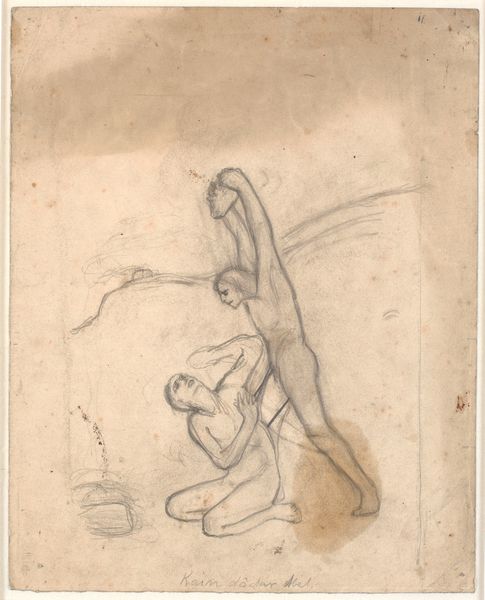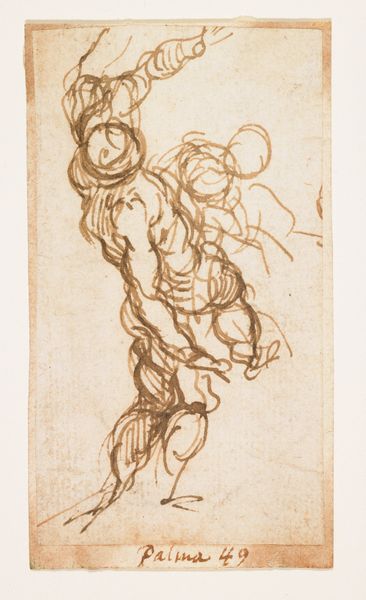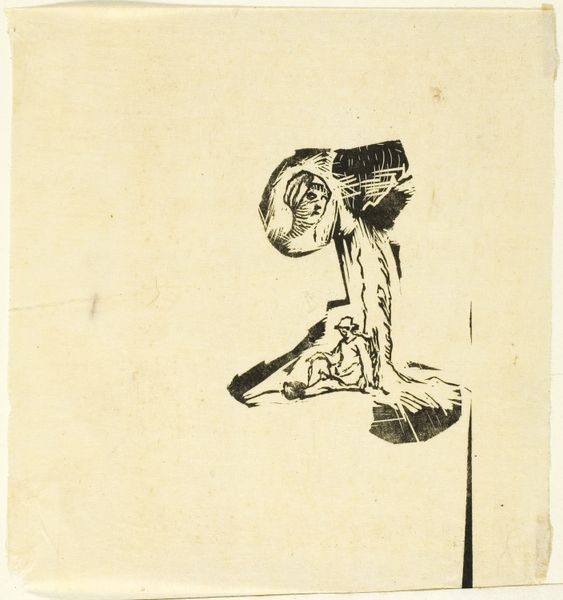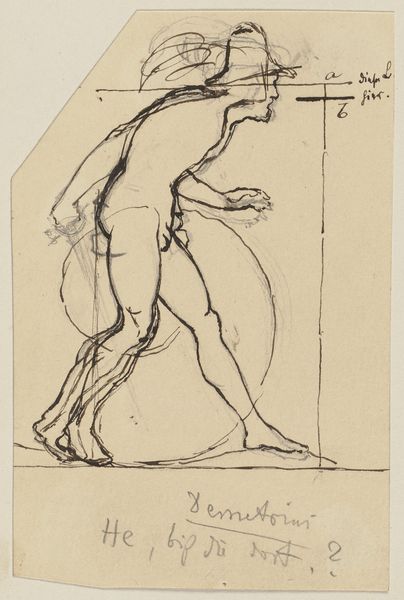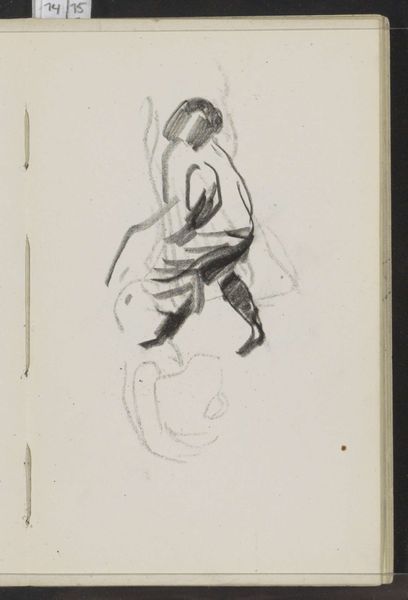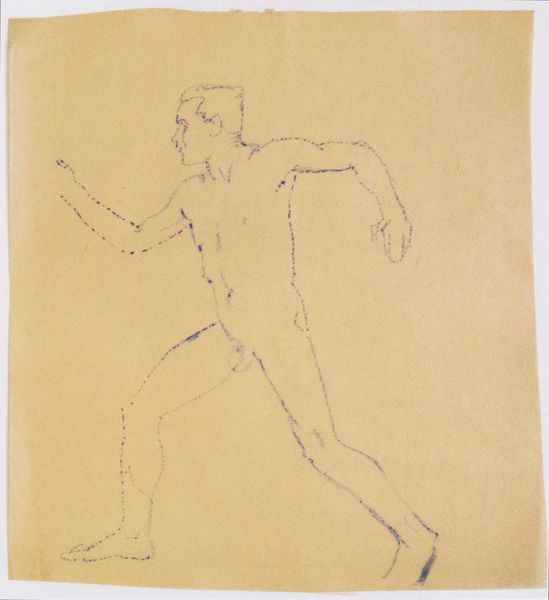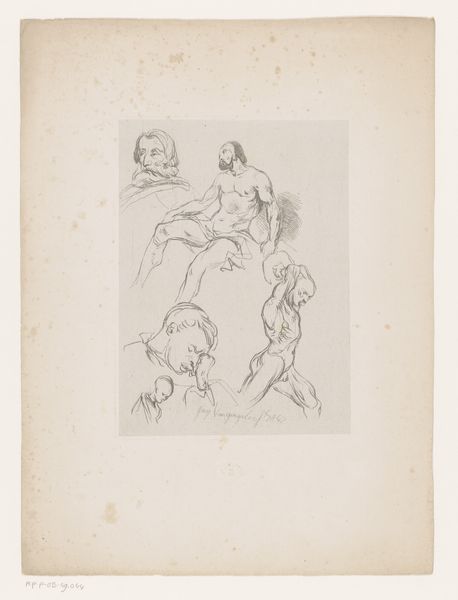
drawing, ink, pencil
#
portrait
#
drawing
#
ink drawing
#
figuration
#
ink
#
pencil
Dimensions: 135 mm (height) x 185 mm (width) (bladmaal)
Editor: Here we have "Standing Figure," or "Stående figur," made between 1879 and 1910, by Oluf Hartmann. It's an ink and pencil drawing. It strikes me as incredibly immediate, almost a fleeting snapshot. What do you see in this piece? Curator: That immediacy is key. Considering the period, we need to understand how artistic institutions were grappling with new modes of representation. The rise of photography challenged painting's documentary role, pushing artists towards capturing fleeting impressions, emotional responses, and the raw energy of a subject rather than precise details. Editor: So, this is partly a reaction against more formal portraiture? Curator: Precisely. It reflects a shift in artistic focus toward conveying internal states and experiences. How does the stark contrast of the ink and the quick pencil strokes influence your reading? Editor: I guess it lends a sense of urgency and incompleteness. Almost as if it’s a figure in motion, a sketch capturing a passing moment that demands the viewer to complete the piece in their imagination. It has some real physical rawness! Curator: Exactly! And considering that many of Hartmann's other works involved landscapes, does the almost featureless blankness around this "Standing Figure" hint at it existing somehow free from or against society and its constraints? Editor: That’s fascinating! It is in the collection of SMK (Statens Museum for Kunst) so presumably its cultural import was recognized by the art establishment? Curator: Well, that's the interesting part, isn’t it? Museums themselves are products of their socio-political moment, canonizing some styles and overlooking others. Hartmann's embrace of rapid impressionism and perhaps a lack of commitment to established genre boundaries has implications on why he's collected and exhibited at different times, how he’s been publicly viewed, or, perhaps, how his contribution to Danish modernism went under-recognized. Editor: So, understanding its historical context adds so many layers! Curator: It really does open up so many lines of enquiry; not just the what and the when, but critically, the why and how of it.
Comments
No comments
Be the first to comment and join the conversation on the ultimate creative platform.

